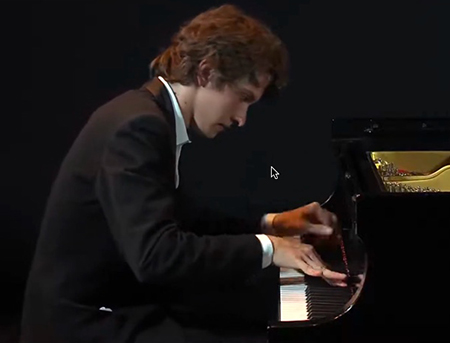by Daniel Hathaway
The pianists who remained on the bench after the rather brutal cut on Wednesday evening in Cleveland Piano’s Virtu(al)oso Competition (the field was reduced from 30 to 6) played virtual 30- to 35-minute programs in the Final Round on Friday and Saturday, pre-recorded at international Steinway locations at the same time as their First Round performances. Here are some impressions.
Friday, August 7 — Session 1



Saturday, August 8 — Session 2



Published on ClevelandClassical.com August 9, 2020.
Click here for a printable copy of this article



